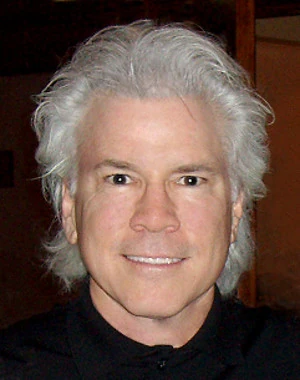No one writes a perfect script from page one. Many writers write a scene, then go back and rewrite it. They write another, then rewrite that. Or worse, they write a line of dialogue or description and rewrite it again and again. It’s sort of a one-step-forward-one-step-back process.
And it’s the wrong way to write!
One of the best lessons I have learned about scriptwriting is this: When you write, write. When you edit, edit. Never do both at the same time.
Writing is the process of creating concepts and putting them down on paper or computer screen. Editing is the process of reading what’s written, evaluating how to improve it, and rewriting to better communicate the concepts. Writing is a creative outflow, editing is a critical inflow (i.e. reading). Thus, editing effectively stops the creative outflow. So, by wearing the writing and editing hats at the same time you will be starting and stopping and starting and stopping, never fully allowing your creative outflow to get a full head of steam. When you get a good creative flow going believe me you don’t want to stop it. And the surest way to stop it is by introverting and editing yourself.
So wear your writing hat only and you’ll get through the draft quickly. Then put on your editing hat and rework it from a critical point of view. Be as hard on your writing as you like, but don’t ever invalidate yourself as a writer. Just know that you’ll get better as you write more.
There’s a Catch-22 about learning to edit. In order to edit you have to know what makes a good script, but being a new writer without much experience, you might not know what makes a good script. You’ll have to pretty much fly by the seat of your pants. Fortunately, over the years I developed a very simple method for basic editing. Anyone can do it. It doesn’t guarantee great writing, but I can assure you your script will get better and better as you do it. Here’s how it works…
After completing your first draft, simply read through it, making whatever improvements you feel you can along the way. Don’t spend a lot of time on one scene. Just rewrite as best you can and move on. Do this with all the scenes until you have finished editing the script. Then do it again. And again. And again. You’ll find that the changes get smaller and smaller, and the script gets tighter and tighter. Just keep doing this until you have no more changes to make, or they are getting so nit-picky that it’s obvious they aren’t improving anything. Then you’re done.
The more you write, the better writer you will become, the more you’ll understand the proper elements of a good script, and the better able you will be to edit your material. Of course, once you really understand the mechanics of writing you won’t need much editing because you’ll be able to get it right the first time. But this takes a lot of study and practice.
If you’re a new animation writer I suggest you read my book before you write your script. Then, after you’ve finished the first draft, read the book again, this time from the point of view of learning what to edit. This will give you a fresh perspective from which to edit your script.
©Jeffrey Scott, All Rights Reserved
Jeffrey Scott has written over 700 animated and live-action TV and film scripts for Sony, Warner Bros., Disney, Marvel, Universal, Paramount, Columbia, Big Animation, Hanna-Barbera and others. His writing has been honored with three Emmys and the Humanitas Prize. He is author of the acclaimed book, How to Write for Animation. To work with Jeffrey visit his website at www.JeffreyScott.tv.
Read other articles from this series:
#1 The difference between live-action and animation writing
#3 It all begins with a premise
#4 The secret to developing your story
#5 Finding the scenes that MUST be there
#7 How to easily transform your outline into script
#8 A brief introduction to script writing
#9 How long should your scenes be?


